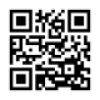Tel:+86 135 6203 9168
E-mail:zivibearing@foxmail.com
WhatsApp: +86 13562039168
Add: Yandian Industry Park,
Liaocheng City, Shandong
Http://www.zivibearing.com

|
|
Brief introduction of rolling bearing fault diagnosis technologyThe fault diagnosis technology of rolling bearing mainly includes vibration diagnosis technology, iron spectrum diagnosis technology, temperature diagnosis technology, acoustic diagnosis technology, oil film resistance diagnosis technology and optical fiber monitoring and diagnosis technology. Among them, vibration, iron shop and temperature diagnosis technology are most commonly used. 1. Vibration diagnosis technology When the working surface of the bearing component is subjected to fatigue spalling, indentation or local corrosion, a periodic pulse signal appears in the bearing operation. This periodic signal can be received by a sensor (speed or acceleration type) mounted on the bearing housing to diagnose the bearing fault by analyzing the vibration signal. Features: Vibration diagnostic technology is widely used; online monitoring can be realized; diagnosis is fast, and diagnostic theory is mature. Scope of application: Particularly suitable for fault monitoring of bearings in rotating machinery. 2. Ferrography diagnostic technology Bearing wear particles are closely related to their working conditions. The lubricating oil with wear particles is passed through a strong magnetic field. Under the action of a strong magnetic field, the abrasive particles are deposited on the iron spectrum according to a certain rule. The iron spectrum can be qualitatively observed on a ferrography microscope or tested on a quantitative instrument. According to this, the working condition of the bearing is judged. Features: The machine does not need to be disassembled; the investment is low, the effect is good; the early fatigue failure of the bearing can be found; the wear mechanism can be studied. Scope of application: Suitable for fault diagnosis of bearings lubricated with lubricating oil, it is difficult for bearings lubricated with grease. 3. Oil film resistance diagnosis technology A well-lubricated bearing has a large electrical resistance between the inner and outer rings due to the action of the oil film. Therefore, by measuring the resistance of the inner and outer rings of the bearing, the abnormality of the bearing can be judged. Features: The same criteria can be used for different working conditions. It has a poor diagnostic effect on abnormalities such as surface peeling, indentation, and cracks. Application range: Suitable for occasions where the rotating shaft is exposed. 4. Optical fiber monitoring and diagnosis technology Fiber optic monitoring is a diagnostic technique that extracts signals directly from the surface of the bearing ring. A displacement sensor made of an optical fiber bundle includes an emission fiber bundle and a reception fiber bundle. The light is reflected back from the gap between the end face of the sensor and the surface of the bearing ring by the transmitting fiber bundle, received by the receiving fiber bundle, converted into an electrical signal by the photoelectric element, and the bearing condition can be evaluated by analyzing and processing the electrical signal. Features: The fiber displacement sensor has high sensitivity; the signal is directly extracted from the bearing surface, which improves the signal-to-noise ratio; it can directly reflect the manufacturing quality, surface wear degree, load, lubrication and clearance of the rolling bearing. Applications: Suitable for machines where the sensor can be mounted in a housing. 5. Temperature diagnostic technology If the bearing produces an abnormality, the temperature of the bearing will change. Therefore, bearing faults can be diagnosed based on changes in temperature, but the ability to judge abnormalities is low. Features: Simple diagnosis; better judgment on bearing burns. Applications: Simple routine diagnostics for bearings in machines. 6. Acoustic emission diagnostic technology Metal materials need to release elastic waves due to internal lattice dislocations, grain boundary slip or due to the occurrence and development of internal cracks. This phenomenon is called acoustic emission. When the rolling bearing is spalled or cracked, different types of acoustic emission signals are generated, which can be used to evaluate the bearing condition. Features: Quick and easy diagnosis; online monitoring. Scope of application: New technologies developed in recent years have been used less in bearing condition monitoring. |
Yandian Industry Park, Liaocheng City,
Shandong
zivibearing@foxmail.com
+86 135 6203 9168

Mobile station